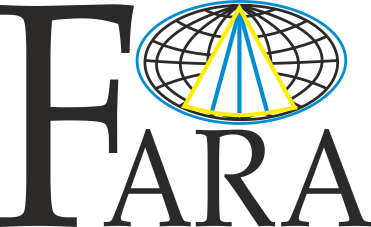Over the years, we have accumulated a wealth of experience in using the FARA system in production practice at ore deposits. The following tasks were solved: searching for sulfide
mineralization zones, tracing zones from borehole to borehole, identifying еhe most rich and promising zones for industrial development, sterilization of the cross-hole space, etc.
Finding new unexplored objects
If there is a borehole network in the exploration area, FARA surveys essentially outline the shape of the conductive bodies. Specifically, FARA is used in discovering ore bodies, ore-
controlled structures or other contrasts in the conductivity of bodies.
In this example FARA outlined the conductive zone between the boreholes, which have no mineralized
intersections in the core log. The zone corresponds to a contact type nickel deposit in the Sudbury
Basin.
The survey was carried oud between the boreholes #1 and #2.
As a result, the conducting zone was localized on the right side of the section. The zone
corresponds to the sulfide mineralization intersected by the boreholes #4, #5 and #6. Borehole #
3 did not intersect the mineralization, which confirms the pinching out of the zone to the middle
of the cut.
Also, an unknown conductive zone was identified in the lower left part of the section. Boreholel
#3 revealed in this area a zone of crushing saturated with mineralized water, which was taken
into account when planning mining operations in the area.
The results of the work to define the Nickel Rim South deposit in Sudbury, conducted in 2002.
The surveys were carried out from the MAC-100G borehole, which intersected two intervals of rich mineralization, to nearby boreholes that did not have such intersections.
Based on the results of the surveys, a model of the deposite was built. The development of the Nickel Rim South deposit has been carried out since 2009.
In this example, during exploration one of the two boreholes has intersected two sulfide mineralized zones.
FARA has shown that these zones have elongated character, and both pinch out at some distance from the other
borehole.
Definition of the discovered bodies
If there is only one borehole that intersected the mineralized bodies, FARA may characterize their shapes and extent using the nearest borehole, instead of additional drilling.
Contouring of mineralized zones
FARA can be used to gather additional information in contouring the discovered mineralization, which may be useful in estimating the resources.
The ore zone (central part of the section), intersected by several boreholes was contoured with the use of FARA. Zones, which were discovered by FARA on the upper part of the
section, are controlled by faulting, as indicated by later logging of the boreholes.
In the lower part of the section between the boreholes #1 and #2, the position of the
conducting object, separated by geological data, was specified.
In the lower part of the section between the boreholes #3 and #4, contours of the known ore
body are confirmed.
It is characteristic that the use of the tomographic reconstruction technique allows to
distinguish between the host rocks. In particular, in the section shown, underlying gneisses
and overlapping norites differ distinctly from ore-controlled Sublayer norites.
New features of the discovered mineralization
FARA reveals previously unknown characteristics of the discovered mineralization. In particular, thickness, boundaries, inclination, pinching of the mineralization, etc.
Sulfide mineralization is intersected by the central borehole.
Boreholes, located nearby have no Intersections of this zone. FARA has discovered that the
mineralization is elongated but pinches out totally at some distance from the other boreholes
drilled nearby.
However, the distribution character of the zone in the two directions is not the same. The
locations of the thinning, thickness, inclination, and other parameters were characterized,
making it possible to describe the zone thoroughly.
Heterogeneities inside the mineralization
FARA reveals heterogeneities inside a large mineralized zone, having a contrasting body of conductivity in it.
The drilled boreholes have intersected a weakly mineralized zone. FARA outlined the boundaries of this zone and discovered a
local more conductive body inside the zone, corresponding to a higher grade of sulfide mineralization.
Cross-hole space sterilization
With a network of boreholes, FARA solves the problem of missing
important search targets. The system unambiguously recognizes the
presence or absence of an object in the cross-hole space, which can
signifi-cantly save time and resources in geological exploration.
In this example at the top of the submitted cross-sections, FARA
identified conductive zones that do not have corresponding intersections
in the boreholes drilled through the network. As a result of using the sys-
tem, targets for additional drilling are set. Potentially, zones can
correspond to cost-effective development objects that would have been
missed without it.
The image was obtained by combining of two independent FARA
surveys.











